How do you choose the backlinks to pursue in your link-building campaign? To get the best return on your investment and avoid harming your backlink profile?
Through link prospecting, the process of identifying and evaluating websites to target.
In the article, you will learn how to prospect potential partners step by step.
But let’s cover some basics first.
What Is Link Prospecting and Why Is It Important for SEO Success?
Link prospecting is the process of finding websites that you could target in your link-building campaign and assessing how well they can help you achieve your SEO goals.
Why does it matter?
Some links can pump more juice than others, and you want to target the right ones. Prospecting allows you to prioritize your link-building efforts so that you get the most bang for your back.
Even if you had unlimited resources, you’d still want to vet your potential partners to avoid associating yourself with websites that can harm your SEO performance or damage your reputation. Like spammy websites.
The other side of link prospecting is ensuring the value of the backlinks you earn. Without quality link prospecting, you run the risk of getting backlinks from spammy, unauthoritative sites that at best do not improve your SEO and at worst actively tank it.
There’s more:
The information you gather during the process can help you increase the effectiveness of your outreach campaigns. The more you know about your prospective partners, the easier it is to create personalized emails that resonate and build a foundation for long-term collaboration.
Finally, prospecting can help you identify the strategies that work for your competitors. So that you can emulate them.
Link Prospecting Process
With the theory out of the way, let’s go through our prospecting process.
Start by selecting a link-building tactic
Which websites you target depends on your link-building tactic. That’s why deciding on the tactic is the first step in the prospecting process.
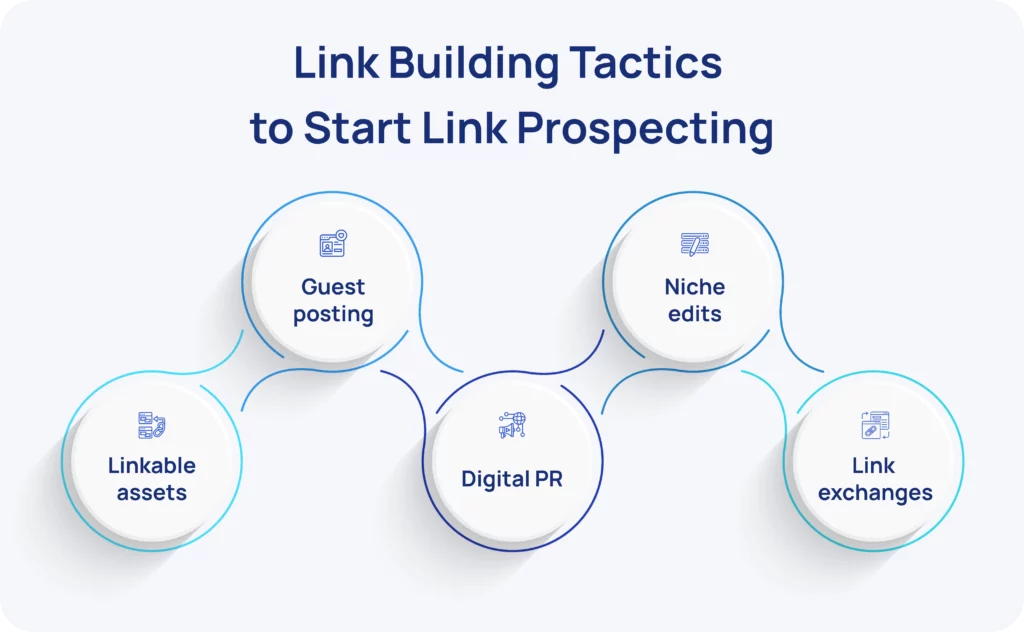
Linkable assets
Linkable assets are resources like infographics, reports with original data and stats, in-depth guides, free tools, or thought leadership content.
Such resources offer unique value to other creators who link back to them to enhance their own content.
Which makes it a very powerful strategy. In fact, 36.3% of the SEOs who participated in our State of Link Building study find creating linkable assets the most effective link-building strategy.

Here’s a good example:
The Periodic Table of SEO Elements created by Search Engine Land has currently over 9K backlinks from 1.3K domains.
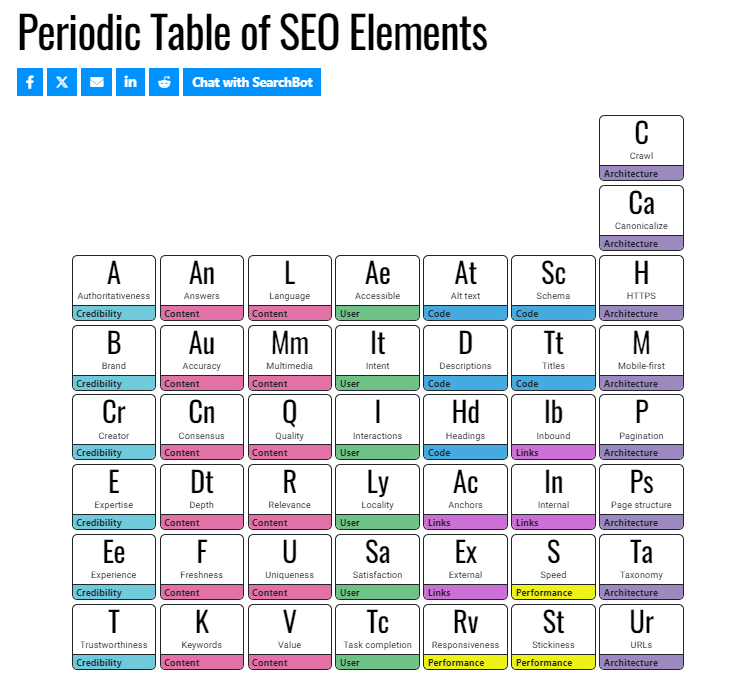
In theory, such resources attract backlinks organically.
In practice, it’s often necessary to promote them, for example, through outreach, especially if you’re only starting to build your subject authority. And that’s where prospecting is necessary.
Guest posting
Guest posting is even more popular than creating linkable assets. In fact, an Authority Hacker study found it the most frequently used strategy, with nearly 65% of link-builders using it in their campaigns and 16% of experts in our study name it as the most effective link-building strategy.
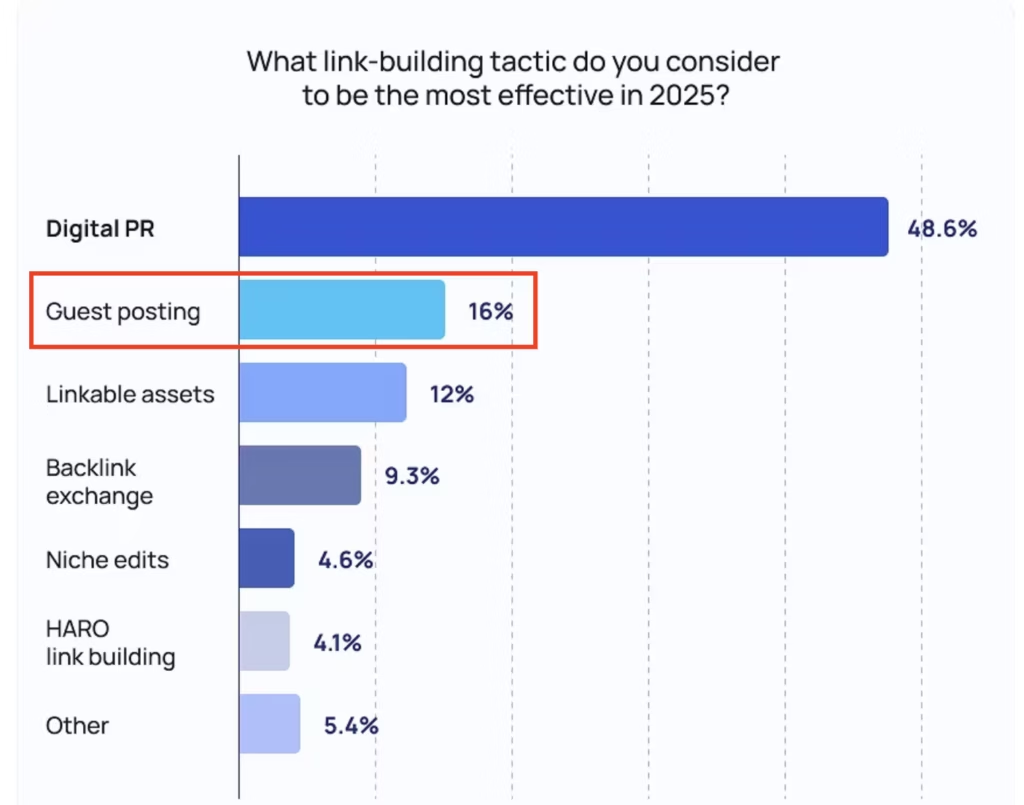
Here’s how it works:
You write a blog post for a different website. In exchange, you can include a backlink to your website and often - to other sites, like your partners. And your partners reciprocate by linking back to you in their guest posts.
Here’s such a guest post written by Irina Maltseva for Semrush. Apart from a backlink to Aura, Irina’s current company, it includes a bunch of other links, including to Hunter.io, where she used to work before.
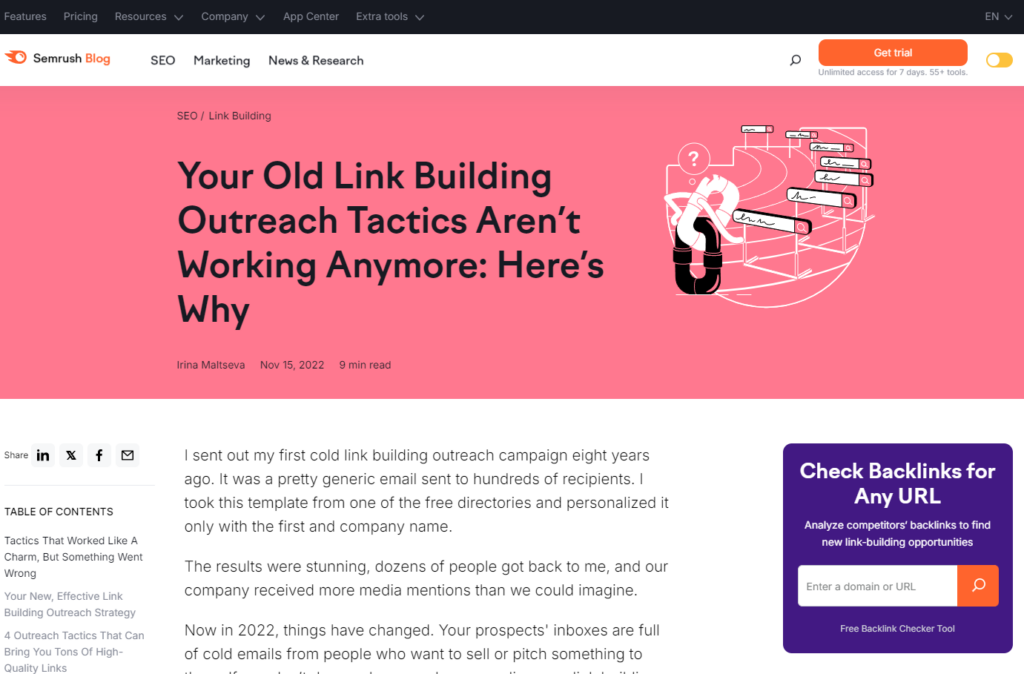
Not all sites accept guest posts and you don’t want to guest post for just anyone, so prospecting is essential.
Digital PR
Digital PR is the knees bees in the link-building space. 67.3% of the surveyed experts in our study found it the most effective strategy because it allows you to generate multiple backlinks from high-authority sites in a short time.
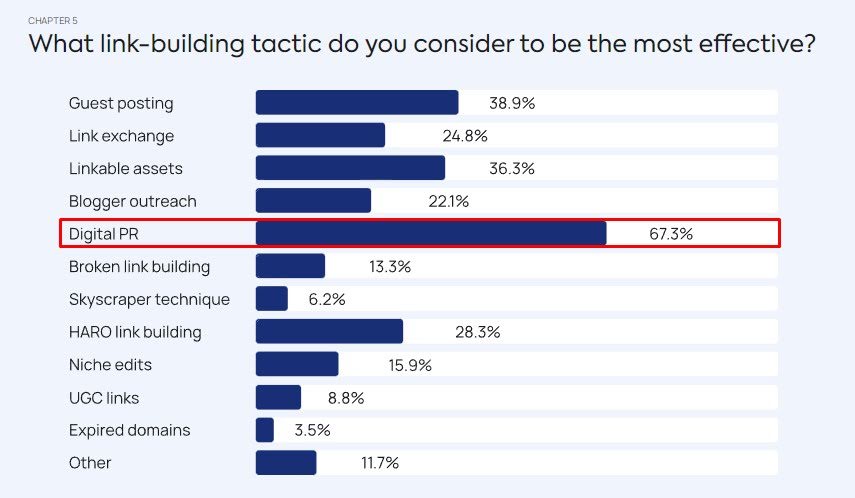
For example, this article from LearnWorlds was used in a PR campaign that secured 40 quality backlinks.

In a nutshell, it involves creating newsworthy content and pitching it to journalists from big media outlets who cover the story in their articles.
For example, you could pitch stories on trending topics in the news (reactive PR), provide thought leadership comments, or send out press releases about a new product launch.
The challenge is finding journalists who regularly write about the topics and that’s when prospecting comes in.
Niche edits
Unlike guest posting, linkable assets, or digital PR, niche edits, don’t involve creating new content. You simply insert the links into an existing blog post, which requires minimal changes, like adding a comment on the topic covered, a paragraph, or a section.
For example, here’s a niche edit we’ve secured in the Hubspot blog.
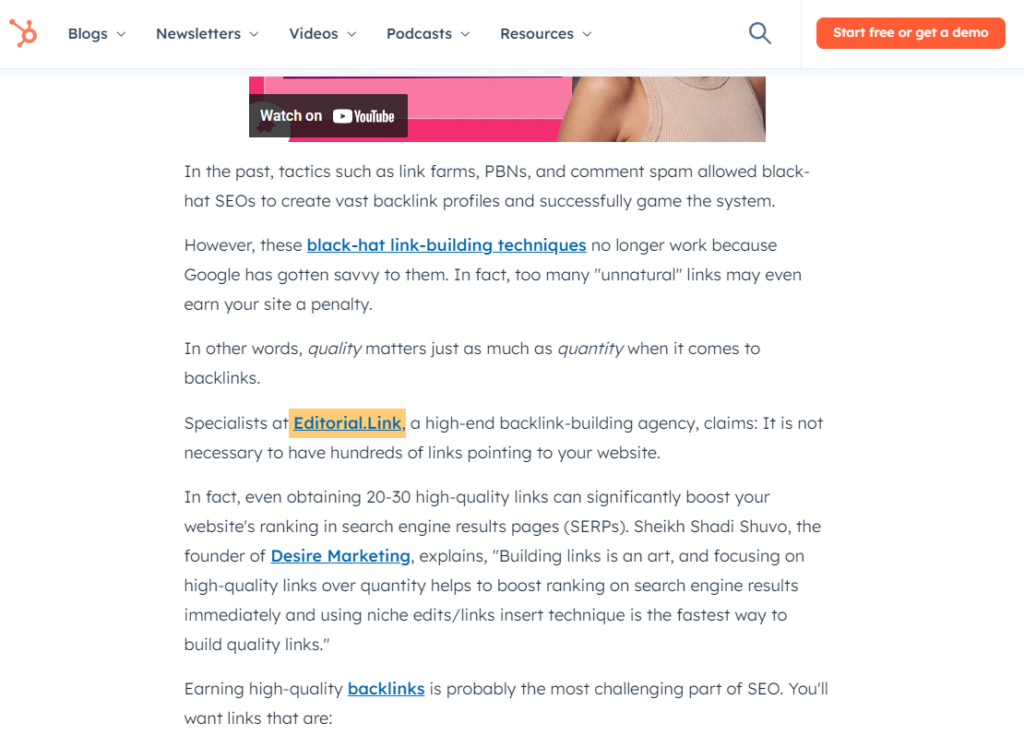
Such link insertions can generate results quicker than other methods because they take advantage of established websites. Hubspot is a reputable website with DR93 and 7.8M monthly visitors.
But you need to find such websites and hence the need for prospecting.
Link exchanges
Link exchanges are one of the most popular link-building tactics because of their simplicity. You link to a website, and they link back to you, which often doesn’t require any changes to your content. It gets a tiny bit more complex if you choose the safer ABC exchange, but not much more.
But you first need to find prospective partners ready to swap links and who won’t damage your rankings.
Define the criteria
Before looking for prospects, define the criteria to assess them against.
Here are the criteria that I use for prospecting:
1) Relevance: Almost 85% of the CEOs interviewed for our study find link relevance the key factor.
Basically, the website needs to be in the same niche as yours or share the same audience. For example, if you’re an adventure photographer, a backlink from an outdoor shop is definitely relevant.

There are exceptions here: large media outlets may not have a specialized audience and yet their links are some of the most desired ones because of the domain authority.
2) Domain Rating: An Ahrefs metric based on the inbound links pointing to the website. 68.3% of experts name DR the key metric when assessing backlink quality. Basically, the higher the DR, the more link equity the link can pass.
At least in theory, because it can easily be artificially elevated. Also, its value depends on the number of outbound links from the domain.
I aim for sites with DR between 30 and 70. Less than 30 isn’t worth the hassle. With DR 70+ sites, it may be hard work to get your foot in the door.
3) Inbound-outbound backlink ratio: Inbound and outbound links matter for 2 reasons.
First, the more outbound links from the website, the less juice they pass your way. So if 2 DR80 sites have 100 and 1000 outbound links respectively, go for the former.
Second, an unnaturally low inbound-outbound link ratio can indicate that the site is selling links. Avoid!
4) Traffic: Website traffic can help you assess if the DR has been achieved naturally. If a site has a high DR but no traffic, it means dodgy practices like buying links were used to get it there.
Combining DR and organic traffic helps us determine if a website is legitimate. If we suspect a website might be manipulating its metrics, we analyze its backlink profile to confirm our suspicions.
Moreover, websites with lots of visitors can bring you referral traffic and increase your site visibility.
What’s decent traffic? Aim for 1000+ when using tactics like guest posting, which requires a fair bit of effort, and 50+ for less labor-intensive ones, like unlinked brand mentions.
Find relevant prospects
Now that you know what you’re looking for, let’s look at a few ways to find relevant prospects. Using a range of tools.
Google search operators
Google is great for finding guest posting opportunities.
Just run a search for your keyword and modify it with one of the operators below:
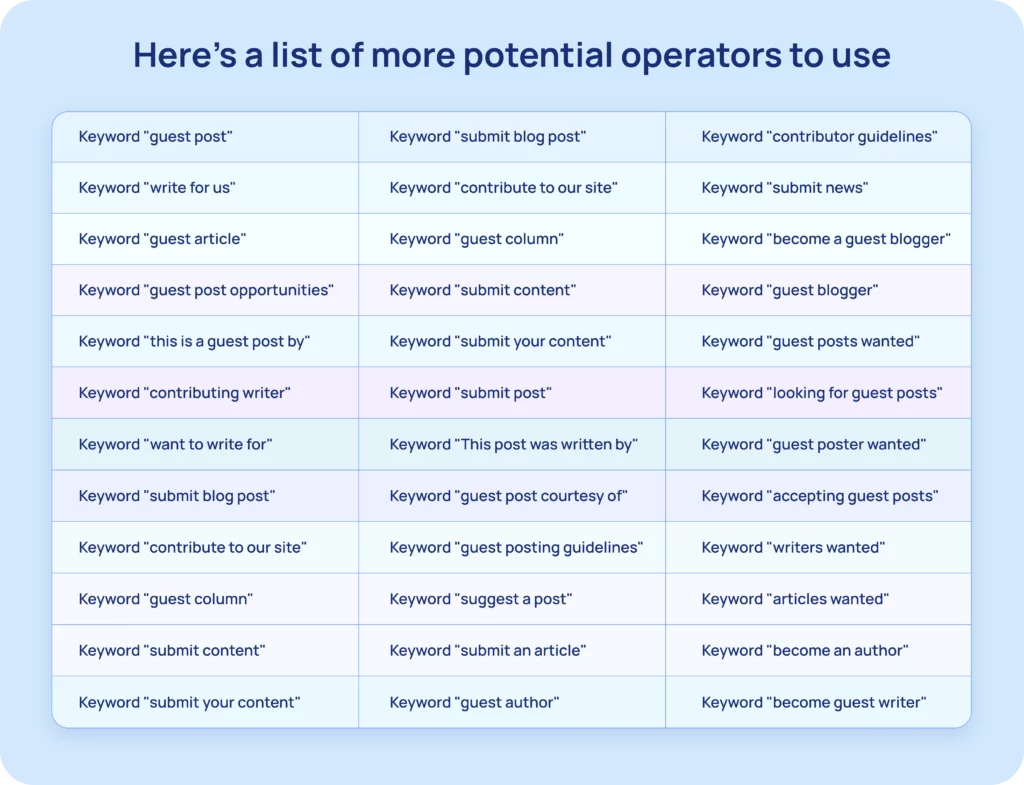
Imagine you’re looking for websites that accept guest posts about employee engagement. Here’s what you get by searching for employee engagement +"write for us"
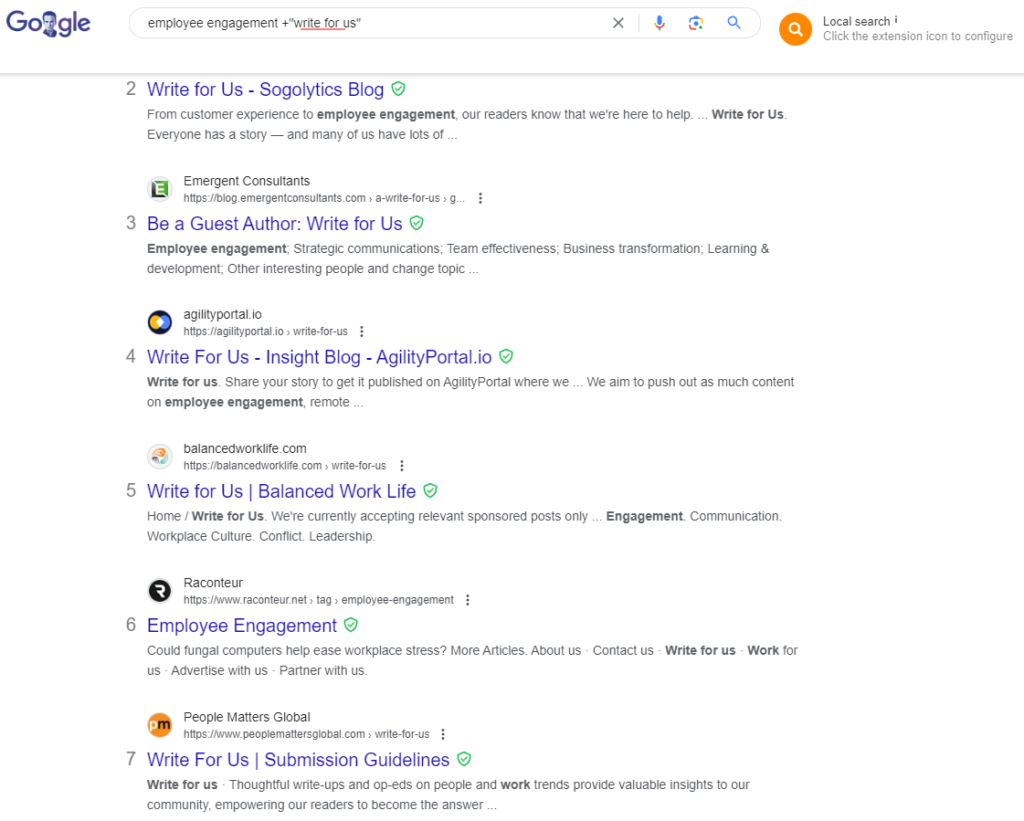
This is a quick and free way to find link prospects but it has 2 downsides: you can’t export the results directly from Google, and you get no metrics to assess their quality. Unless you’re an Ahrefs subscriber and have installed its SEO Toolbar extension.
Ahrefs
Nearly 65% of experts who took part in our study use Ahrefs, which makes it the most popular SEO suite. No surprise as it offers excellent value and is a brilliant prospecting tool.
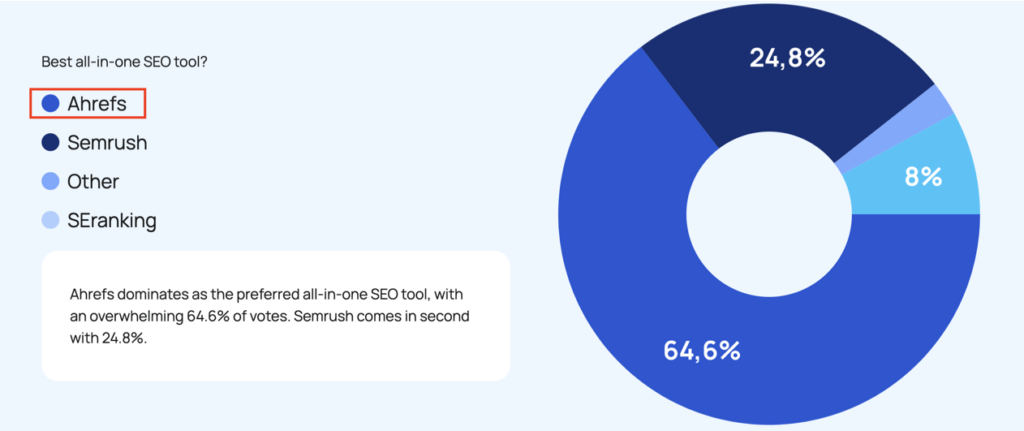
Let’s look at a few ways you can use it to find link prospects.
Find backlink gaps
Ahrefs Link Intersect tool allows you to find sites that link to your main competitors but not to you.
Here’s how to do it:
- In Site Explorer, navigate to Link Intersect (in the Backlink Profile menu section).
- Type in your competitors’ URLs in the Show me who is linked to these domains or URLs section.
- Type your domain URL in But doesn’t link to…
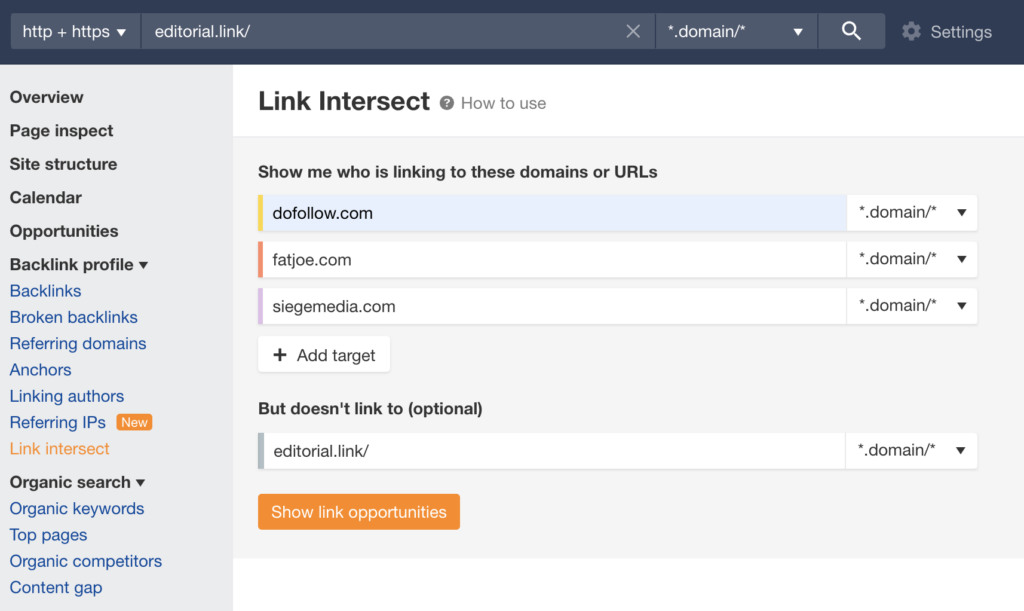
- Hit Show link opportunities to get a list with all sites linking to your competitors.
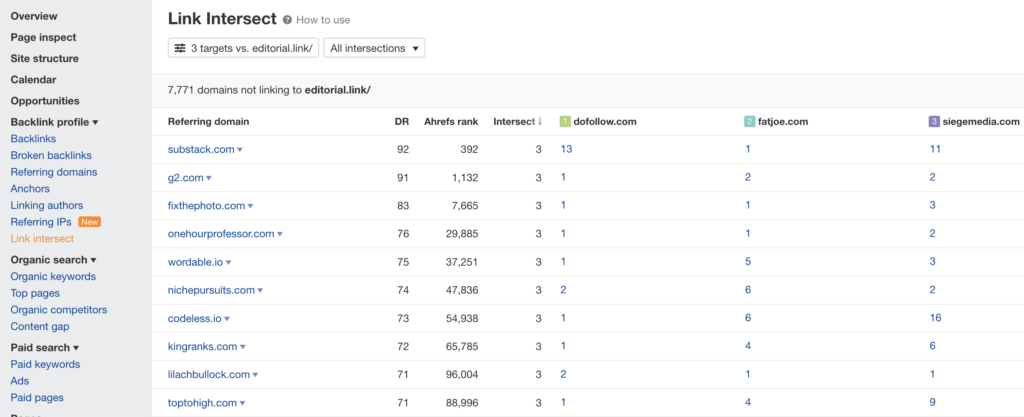
- Click on the numbers for more detailed insights about the linking domains.
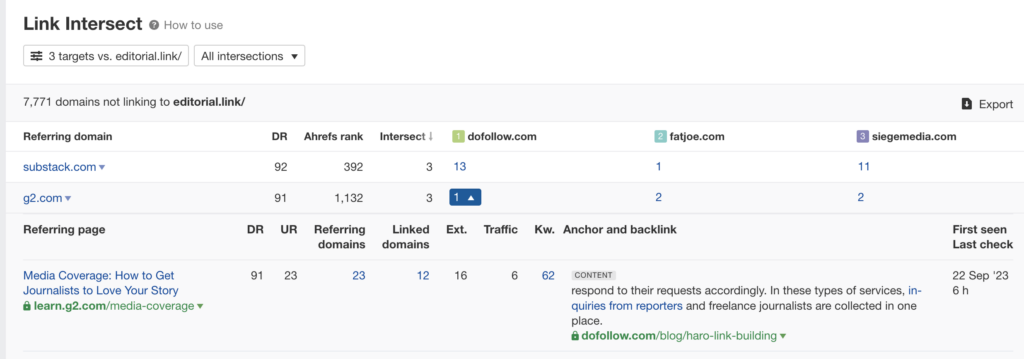
Research competitor backlinks
Another way to find relevant websites is by analyzing your competitors’ backlinks profiles one by one with Ahrefs Site Explorer.
- In Site Explorer, navigate to the Backlinks report (left side menu).
- Use the search features to filter the results.
Here are a few ideas:
- Search for pages with .jpg, .svg, .webp, and .png files in the Target URL to find infographics.
- Search for “case study”, “ultimate guide”, “research study”, “statistics”, “checklist”, and “template” in the Anchor and surrounding text.
- Filter by “best”, “top”, and “leading” in the Referring page title to find listicles.
- Search for “blog” in the Ref. page URL to find guest posts.
- Filter by “links” or “resources” in the Referring page URLs to identify resource pages.
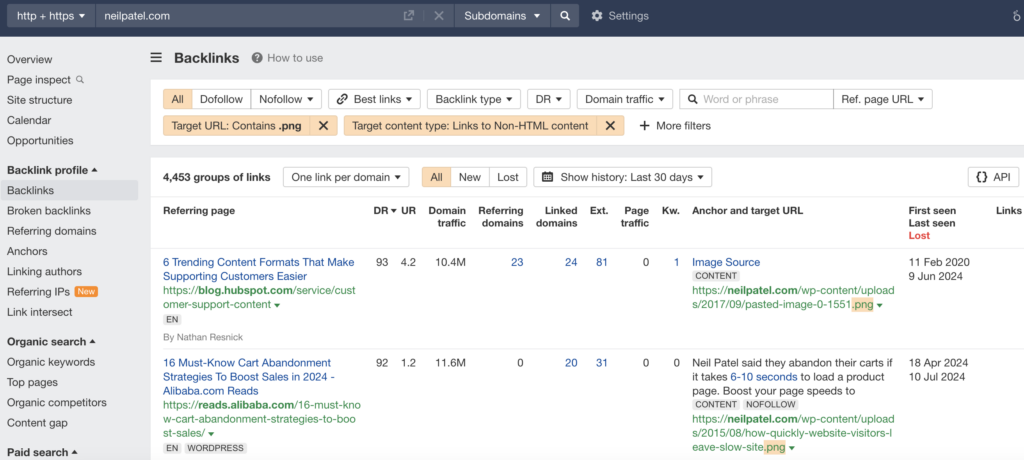
💡 Pro tip: don’t just target the websites that link to your competitors. Instead, look at page categories to identify unique opportunities. For example, if your competitor gets a backlink from a bakery specializing in wedding cakes, target not just this particular site but other similar ones.
Search the web content
Ahrefs Content Explorer is another tool you can leverage to find new prospects.
Here are a few ways to do it:
- To find guest-posting opportunities, run a search just like with Google advanced operators. For example, employee engagement +"write for us"

- To find guest posts written by well-know bloggers in your niche, search for topic + author:”name”. For example, link building + author:"Neil Patel"
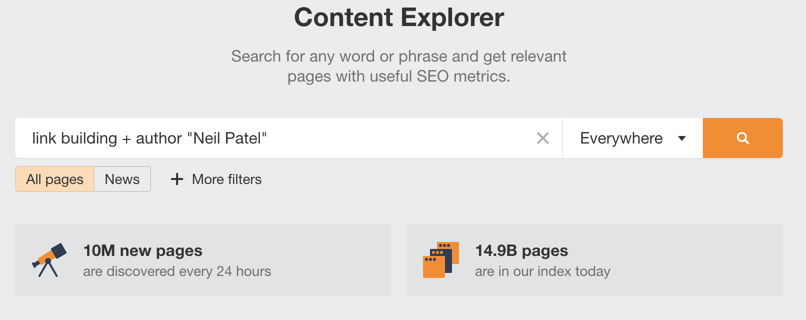
- To find listicles which feature competitors but not you, search for “competitor X” “competitor Y” “competitor Z” -”your company name”. For example, “linkbuilder” “userp” “linkdoctor” “outreach monks” -”editorial.link”.

- Search for the topic you’re covering In title to find pages for link insertions and use the Authors tab to find influencers and journalists writing about the topic.
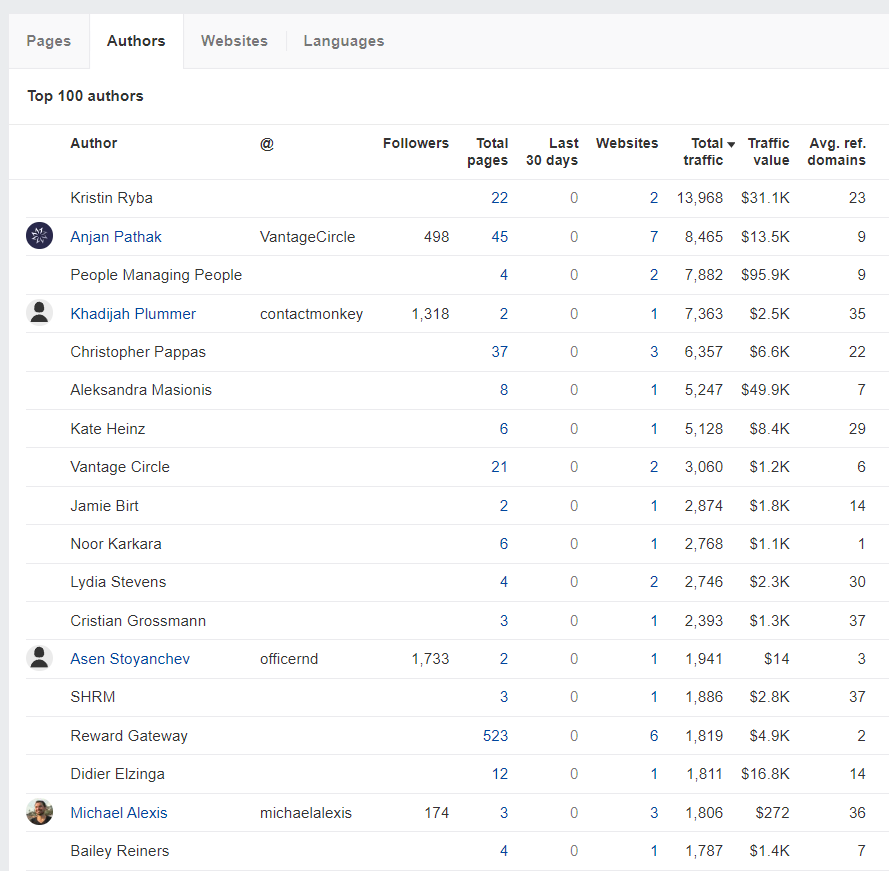
PR tools
If digital PR is your tactic of choice, there are dedicated tools, like Roxhill, Prowly, BuzzSumo, or Pitchfork, that will help you find relevant people to reach out to.
For example, Roxhill offers a database you can search by topic, sector, keyword, and company to find relevant articles along with the details of their authors.
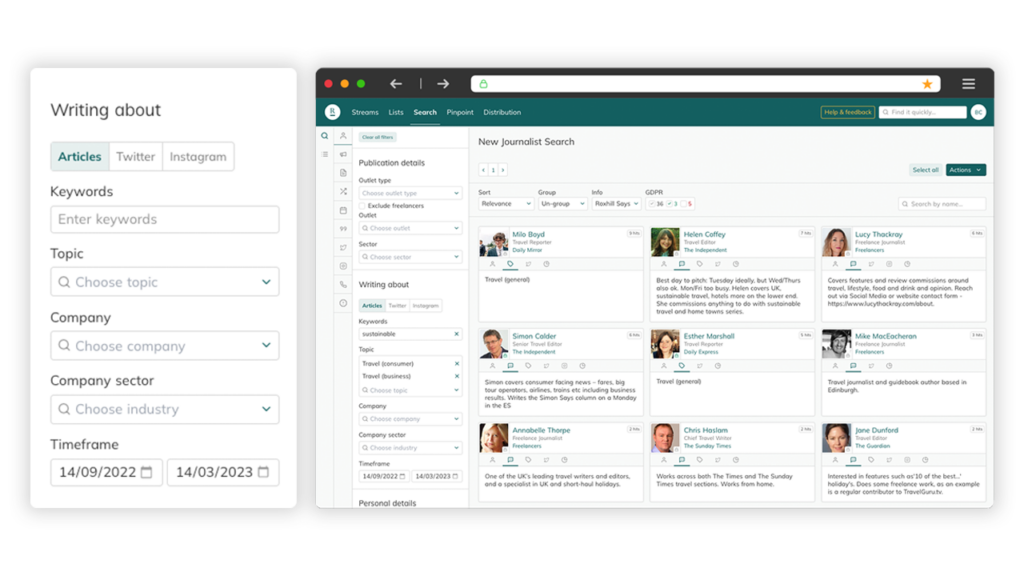
Vet Potential Link Prospects
So we have a list of potential websites to target. Let’s use the metrics that we have previously chosen to vet them.
You can do it by going through each site manually and checking whether the sites tick all the boxes.
Imagine you’re looking for guest posting opportunities in the SaaS startup space. Through Google Search, you come across startup.info. Looks promising.
Here’s what the website Overview in Site Explorer looks like:
We’ve got a solid DR of 76 and tons of backlinks from over 12.5K domains. Not too shabby!
🚩 The first red flag is the monthly organic traffic estimate: 20!
How come the site gets so many backlinks if hardly anyone visits it? The backlinks aren’t likely to be legit but even if they are, you won’t get much referral traffic from the website.

Just to confirm we want to eliminate the site, I have a look at its content. While the overall design isn’t too bad, what puts me off is the quality of the articles and the range of topics they cover. The content lacks depth and it doesn’t target the specialist audience I’m after.

The same Google Search reveals another prospective partner, getzendo.io.
This one has a DR58, which falls into my goal range, and the estimated monthly traffic - 2K, which has been growing steadily this year. That’s a tick too.

Its blog features in-depth articles of decent quality. Another tick. Happy to put this one on our shortlist.
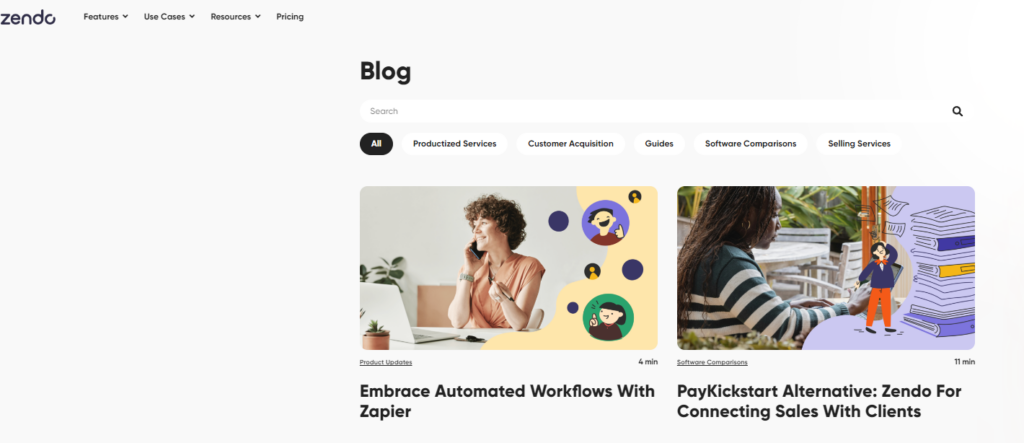
Analyzing prospects site by site like that could be a chore, but you can make your life a little bit easier by using Ahrefs filters to narrow down the selection. Or once you export the prospect list to a spreadsheet, filter them over there.

Find Contacts of Prospects
If you’re using PR tools for your campaign, you already have the contact details of the journalists who may be interested in your story.
If it’s other techniques, like guest posting or link exchanges, you still need to find the person to contact.
I mean you could send your pitch via the contact form or to info@XYZ.com, but this reduces the chances you get a response. The most effective link-building outreach targets the decision makers: the SEOs, content managers, or editors.
LinkedIn is a good place to start. Find the company site, head to the People tab, and search for relevant keywords, like content, marketing, editor, etc.
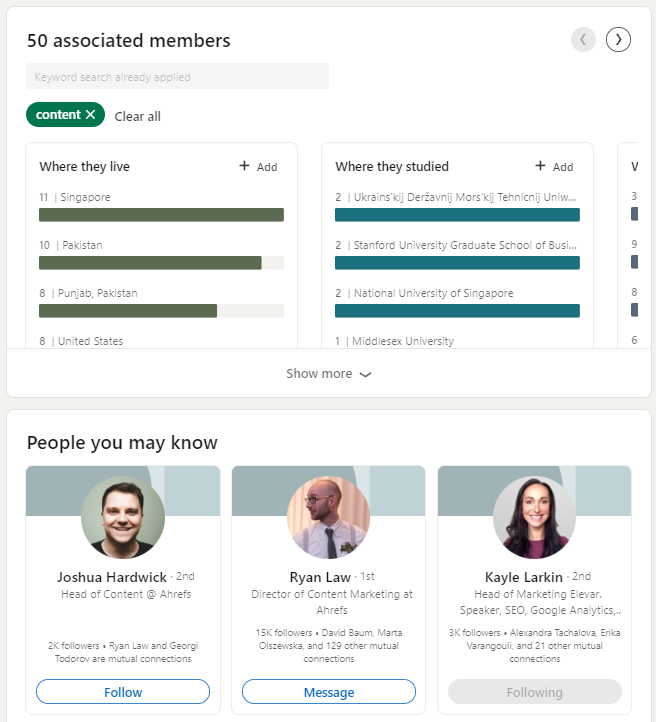
LinkedIn gives you an extra advantage: you can get on the person’s radar by following them and engaging with their content to prime them for your outreach message. Which you can send via LinkedIn as well.
Alternatively, use an email finder, like Hunter.io (which seems to be really popular among the experts who took part in our research).
Simply enter their name and domain, and hit Find.
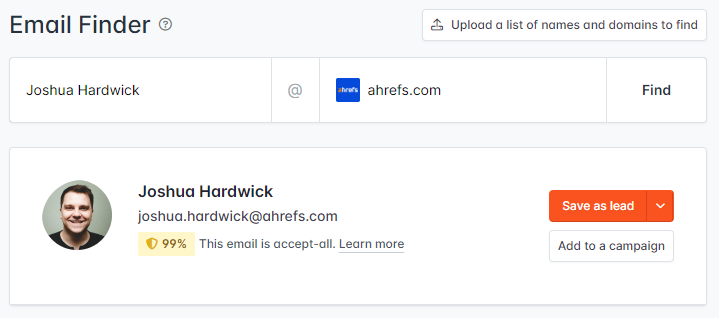
Hunter.io allows you to search for contact details of each person individually or you can upload their names and domains in batches. And then save them as leads for your outreach campaigns, which you can plan and execute from the platform.
Final Words
Link prospecting is an essential aspect of each link-building campaign.
It helps you ensure that you’re not wasting your time reaching out to sites whose links won’t have any impact on your SEO performance - or can harm it. It also gives you an opportunity to get to know the site so that you can tailor your pitch and create content that resonates with their audience.
The catch is that thorough prospect research is extremely resource-intensive.
If you’d like someone to take this load off your shoulders and help you manage your link-building campaigns from A to Z, get in touch with the Editorial.Link team.



